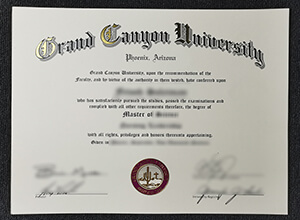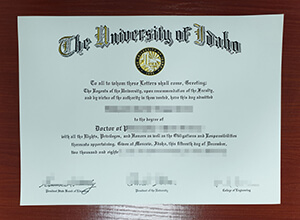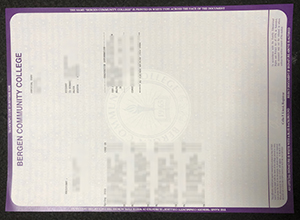
New Hampshire Driver’s License
Real New Hampshire Driver’s License maker, Buy a fake Driver’s License, Scannable New Hampshire Driver’s License. Many states in the United States allow non-residents with foreign driver’s licenses to rent cars and drive.
Check out the state-by-state regulations and have fun! According to geographical location, the United States can be divided into the western United States, the eastern United States and the central United States.
Western America
Alaska
Yes, you need to be at least 16 years old, but only valid for 90 days of entry.
Arizona
Yes, no international driver’s license is required.
California
Yes, if you are a tourist over the age of 18 and have a driver’s license from another state or country, you can legally drive while the license is valid. If you are a California resident, you must obtain a driver’s license within 10 days to drive.
Colorado
Yes, driver’s licenses from other countries can only be used within 30 days.
Hawaii
No, a driver’s license outside the United States needs to be used in conjunction with an international driver’s license, and China cannot apply for an international driver’s license.
Idaho
Yes, tourists within 1 year of entry can use a driver’s license from another country, but they cannot engage in commercial stance. Carrying an international driver’s license is recommended, but not mandatory.
Montana
Yes, non-residents over the age of 15 may drive non-commercial vehicles in Montana with a valid home country (state) driver’s license.
Nevada
Yes, non-residents over the age of 16 may drive in Nevada with a valid home country (state) driver’s license, and may only drive the equivalent model of that driver’s license.
New Mexico
Yes, like other states, New Mexico requires a valid driver’s license to drive, preferably an international driver’s license.
Oregon
No, the rule only states that out-of-state residents over the age of 16 can drive in Oregon with a valid driver’s license, but does not mention whether a foreign driver’s license is allowed.
Utah
Yes, tourists over 16 years old with a valid driver’s license from their home country (state) can drive in Utah for a period of 6 months.
Washington
Yes, visitors over the age of 16 may be in Washington State with a valid home country (state) driver’s license, valid for one year.
Wyoming
Yes, a valid foreign driver’s license can legally drive on the road in Wyoming. It is better to have an international driver’s license, but it is not mandatory.
Eastern US
Connecticut
Yes, Connecticut allows students or visitors to use a foreign driver’s license for up to one year. If the driver’s license is not in English or Spanish, it needs to be used in conjunction with the international driver’s license.
Delaware
Yes, non-residents over the age of 16 may drive with a valid driver’s license from their home country (state).
Georgia
Yes, you can drive a car with a valid foreign driver’s license within one year, but if the driver’s license is not in English, it needs to be used together with the international driver’s license.
Maine
Yes, all non-state residents may drive a vehicle with a valid driver’s license from their home country (state).
Maryland
Yes, if the driver is of the legal driving age in Maryland (18 years old), non-residents can drive a vehicle of the same class with a valid driver’s license in their home country.
Massachusetts
No, Chinese mainland driver’s license is not allowed; Hong Kong, Macau, Taiwan driver’s license is allowed
New Hampshire
No, foreign tourists need to present an international driver’s license and a valid driver’s license in their home country to drive legally.
New Jersey
No, New Jersey only allows residents of signatory countries to drive in the state as tourists.
New York
Yes, non-residents can use a valid out-of-state driver’s license to drive a vehicle without an international driver’s license.
North Carolina
Yes, non-residents can use a valid out-of-state driver’s license to drive a vehicle without an international driver’s license.
Ohio
No, only residents of the signatory countries are allowed to drive in the state as tourists. People from other countries need to obtain a local driver’s license.
Pennsylvania
Yes, non-residents over the age of 16 can drive a car of the same class with a valid driver’s license in their home state (country) and are familiar with traffic signals in their home state.
Rhode Island
Yes, non-residents over the age of 16 may drive a vehicle with a valid driver’s license in their home state.
South Carolina
Yes, non-residents over the age of 16 may drive a vehicle with a valid driver’s license in their home state.
Vermont
No, as a foreign tourist, Vermont only accepts driver’s licenses from some countries, and you must carry an international driver’s license when using a driver’s license. Mainland China driver’s license is not allowed, Hong Kong, Macau and Taiwan can.
Virginia
Yes, foreign tourists can use a driver’s license, but they need to bring a translation of the driver’s license.
West Virginia
Yes, non-residents over the age of 16 can drive a vehicle with a valid driver’s license in their home state (country), but are limited to 90 days per year.
Washington, D.C. (District of Columbia)
Yes, when using a non-English driver’s license, you need to bring the driver’s license translation document from a professional translation agency or embassy, and have the official seal of the agency. If moving to Washington D.C. from another country, requires a DC driver’s license (not a tourist visa and resides in DC for more than 30 days)
Florida
Yes, non-residents may drive a vehicle with a valid driver’s license from their home state.
North Dakota
Yes, non-residents over the age of 16 may drive a vehicle with a valid driver’s license in their home state.
South Dakota
Unknown, students are allowed to drive with a valid out-of-state driver’s license, but there is no mention of foreign driver’s licenses.
Central America
Alabama
Yes, non-residents over the age of 16 may drive a vehicle with a valid driver’s license in their home state.
Arkansas
No, an international driver’s license is required.
Illinois
Yes, non-residents can use a valid driver’s license from their home state (country) to drive a vehicle for 90 days. They need to bring an English translation for the police to check.
Iowa
Yes, non-residents may drive a vehicle with a valid driver’s license from their home state.
Kansas
Yes, if you have a valid driver’s license in your home country and are not a permanent resident of Kansas, you can drive legally for one year (from the time of entry shown on the I-94). Although it is not compulsory, it is better to have an international driver’s license.
Louisiana
Unknown, students are allowed to drive with a valid out-of-state driver’s license, but there is no mention of foreign driver’s licenses.
Minnesota
Yes, non-residents over the age of 15 may drive a vehicle with a valid driver’s license from their home state.
Mississippi
Yes, non-residents over the age of 16 may drive a vehicle with a valid driver’s license in their home state.
Missouri
Yes, non-residents over the age of 16 may drive a vehicle with a valid driver’s license in their home state.
Oklahoma
Yes, non-residents over the age of 16 may drive a vehicle with a valid driver’s license in their home state.
Wisconsin
Yes, foreign tourists can drive a vehicle with a valid driver’s license from their home country.
Indiana
Yes, foreign tourists can drive a vehicle with a valid driver’s license from their home country, but need to bring an English translation. Foreign driver’s licenses cannot be used as IDs.
Kentucky
No, the Geneva Convention countries can use the valid driver’s license of the home country to drive the vehicle, but the Chinese driver’s license is not allowed, but Hong Kong, Macau and Taiwan can.
Michigan
No, the Convention countries can use the valid driver’s license of the home country to drive the vehicle, but not the Chinese mainland driver’s license, but Hong Kong, Macau and Taiwan can.
Nebraska
Unknown, foreign driver’s license is not mentioned.
First, pay attention to understand the local traffic rules. Although the traffic rules between China and the United States are similar with minor differences, the requirements for implementation are more specific and stricter, and special attention should be paid to them. When driving in the United States, you must first learn and understand the traffic signs on the road and intersection, and follow them. In addition, it should be noted that the traffic rules between states in the United States are slightly different. Before driving, you need to have a general understanding of the traffic rules of the state where you are driving, so that you can know what to do.
Second, fasten your seat belt. No matter when or where, the first thing after getting in the car is to wear a seat belt. In the United States, it is illegal for front-seat passengers not to wear seat belts, and if found, the police will fine the driver of the car. Wear your seat belt as much as possible, even in the back seat. In the event of a crash, the protection of seat belts is crucial.
3. Check the intersection turn and turn repeatedly. When turning right at the intersection, first make sure that there are no cars on the left, and also make sure that there are no pedestrians and bicycles on the right before turning right. Take a right turn without a green light as a STOP sign; when turning left, wait patiently to make sure that there are no cars approaching vertically from the left or right, and at the same time make sure that there are no cars coming on the opposite side, or confirm that the cars on the opposite side are far enough before you can Turn left. If you can’t confirm 100% safety, don’t step on the accelerator with one foot, no matter how the car behind you honks the horn.
4. Obey the traffic signs. There are many traffic signs in the United States, take the “STOP” sign as an example. “STOP” (meaning short-term stop, with a white polygon on a red background, as shown in the figure below) is a common sign in every state in the United States, which is located at road intersections without traffic lights. When driving through an intersection and encountering a “STOP” sign, no matter whether there are other pedestrians or vehicles passing through the intersection, the vehicle must be completely stopped (generally no less than 3 seconds), and the vehicle can be passed after confirming safety. Remember, rather wait for three points, not one second.

 US Diploma
US Diploma UK Diploma
UK Diploma Other countries
Other countries Canada Diploma
Canada Diploma Australia Diploma
Australia Diploma Fake IDs
Fake IDs Malaysia Diploma
Malaysia Diploma Singapore Diploma
Singapore Diploma France Diploma
France Diploma NZ Diploma
NZ Diploma Other Documents
Other Documents



